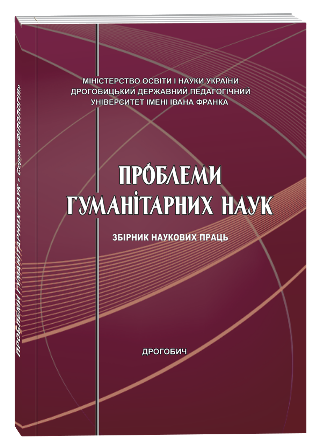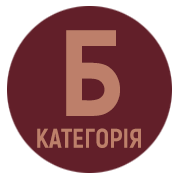ETHNO-PSYCHOLOGICAL SPECIFICS OF THE IMAGE OF A GHOUL IN THE FOLKLORE OF TRANSCARPATHIA
DOI:
https://doi.org/10.24919/2522-4565.2021.47.28Keywords:
folklore of Transcarpathia, two-soul man, demonology, mythology, magic ritual, ghoulAbstract
The article analyzes the ethno-psychological specifics of the image of the ghoul in the folklore of Transcarpathia, as well as magical rituals aimed at its neutralization. The old stories, beliefs and legends about ghouls are considered. They are recorded during the twentieth century by P. Bogatyrev, F. Potushnyak, P. Svitlyk, I. Senko, and in this wok, the demonic character is the personification of the second, dark human soul. In the folklore of Transcarpathia, ghouls are the personification of dead two-soul men, their demonic power is seen after the death of a person in whose body coexisted good and demonic souls during his life. Like the ancient pagan deity, the vampire demands respect from the people (wants people to “bayal”), and when he does not get what he wants, he takes cruel revenge – he kills people and animals. According to the folk beliefs of the Ukrainians of Transcarpathia, funeral rituals were important: thanks to them it was possible to neutralize the vampire. The article analyzes the case of the funeral of a two-soul man who voluntarily refused to become a ghoul (recorded in the late 1920’s by P. Svitlyk), the semantics of amulets used against ghouls is also considered, the semantics of symbolic tasks, which outlined in the spells people trying to prevent the deceased from turning into a vampire is clarified. The apparent inability of the vampire to perform these tasks was perceived by the people’s imagination as an unsuccessful initiation into the category of dead demons. The unfulfilled task metaphorically deprived the two-soul man of the opportunity to harm people and livestock. The mystical worldview of Transcarpathian peasants modeled the idea of two types of ghouls: forest and water. Forest ghoul, drinking the blood of living people or animals, seeks a kind of “compensation”, involvement in life. In the first half of the twentieth century, there were beliefs about water ghouls: two-soul men who drowned. According to their semantics, the water ghouls are similar to the watermen and mermaids – they also want to drown a person. Unlike the forest ghoul, the water one eats human corpses, not drinks their blood. However, in the stories of the late twentieth century, the water ghoul is no longer a killer: it only frightens people who cross the river on a boat in the evening – he shows himself as a white head or comes to the fisherman house to ask for his share of fish he helped to catch. The image of the vampire is associated with death, a dark deity and the differentiation of the content of the unconscious that is the separation of good from evil, the righteous soul from the demonic one. In this way, the idea of saving even a great criminal is metaphorically affirmed, because his dark nature – the demonic soul of a two-soul man – a ghoul will be responsible for the evil he caused.
References
Богатырев П. Магические действия, обряды и верования Закарпатья. Вчені Росії про Закарпаття. Із карпатознавчої спадщини / упор., підгот. текстів, передм. та прим. О. Мазурка, І. Мандрика. Ужгород : Ужгородська міська друкарня, 2009. С. 221–353.
Воллан де Г. Угро-русские народные песни. Очерк быта угорских русских. Вчені Росії про Закарпаття. Із карпатознавчої спадщини. Ужгород : Ужгородська міська друкарня, 2009. С. 184–200. Голан А. Миф и символ. Москва : Русслит, 1993. 375 с.
Потушняк Ф. Душа в народнім повір’ю села Осій. Науковий збірник товариства «Просвіта» за 1937–1938 рр. Річник ХІІІ‒ХІV. Ужгород : Друкарня оо. Василіян в Ужгороді, 1938. С. 33–44.
Світлик П. Дводушник (Народне повѣря – Боржавська долина). Подкарпатська Русь. Ужгородъ, 1931. Рочник VІІІ. Число 3. С. 52–56.
Сенько І. Перевертні. Зелені Карпати. Ужгород, 1994. № № 1–2. С. 130–137.
Сенько І. Як то давно було: Легенди, перекази, бувальщини, билиці та притчі Закарпаття у записах Івана Сенька. Ужгород : Закарпаття, 2003. 368 с.
Сенько І., Бідзіля Ю. Тлін тіла і безсмертя душі. Карпатський край. Ужгород, 2000. № № 1–4 (120). Річник 10. С. 103–104.
П. Ф. [Потушняк Федір]. Пострѣлъ-устрѣлъ (Про болгарськѣ впливы у насъ). Литературна недѣля. Ужгородъ, 1943. Річник IІІ. Ч. 4. С. 80–81.
Франко И. Сожжение упырей в с. Нагуевичах в 1831 г. Українці: народні вірування, повір’я, демонологія / упор., прим. та біогр. нариси А. Пономарьова, Т. Косміної, О. Боряк ; вступ. ст. А. Пономарьова. Київ : Либідь, 1991. С. 512–526.
Ятченко В. Трансформація уявлень про смерть в карпатському фольклорі як показник екзистенційних прагнень людини. Науковий вісник національного Університету біоресурсів і природокористування України. 2009. № 137. С. 195–201.



